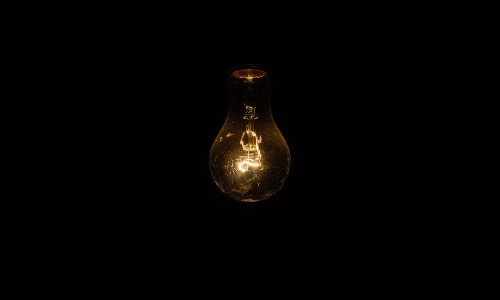While we continue to wait on the transmission to get fixed, we are busy with other projects such as solving the power issue. Today, we received a TrippLite 2000 Watt Inverter/Converter. I’m going to be hooking it into the power system as soon as I can, but a few comments on it first. When everything is completed and in place, we should have enough power to handle the demands of the Smart Home on Wheels and be able to run the equipment with or without shore power.
For one thing, it is massive. Much bigger than I expected. I’m not sure how large I thought it would be, but it is almost two feet long and about seven inches each other direction. It weighs a good amount too, so its a good thing it will be set up and left to be and doesn’t ever have to be moved again. According to the TrippLite specifications page its exactly 7.25″ x 8.75″ x 21.75″, and just shy of fifty pounds. While not a bad thing, it is certainly larger than I thought it would be. Had I read the spec sheet in more detail, I would have known this.
For another thing, now I have to figure out how to install it. I hadn’t planned on it arriving so quickly, so I was unprepared to put it in the system completely. In our system, we are removing half of the dinette to install a desk and underneath the desk will hide the power system. Any control monitors we can attach will be on the side of the desk for easy viewing, while the batteries, inverter/converter, and charge controller will be inside. We are getting AGM batteries so they don’t require venting, and thus can be placed inside, but all the systems do release a little heat so we have to account for that.
Right now, the converter in the RV is on the passenger’s side of the RV and underneath the refrigerator. The shore power comes in on the driver’s side though, inside the wet bay. I’ll have to figure out the path the cable goes so I can reroute it to the batteries through the inverter/converter, and then from both of those up to the breaker/fuse box that is located in the back bedroom. I have to figure out which gauge wire to from the inverter to the breaker box as well. Since it is a 2000 Watt inverter, it’ll be 18.2 amps at the max. That means for the AC power, it will have to be 10 gauge cabling. Since I won’t be tearing out the ceiling in the RV, it’ll have to go underneath, which means taking it from close to the ceiling, down through the floor, diagonally underneath the floor, then back up in the desk area where the dinette used to be. That AC line will go from the inverter to the breaker box.
Then, for the DC power, we might be able to use the existing cable, but I’d still like to upgrade it anywhere since it is 30 years old. In the current setup, there is only one battery hooked up and frankly, I have no idea where the wires go. I assume they connect to the converter, but they may very well be spliced somewhere between the batteries and converter, or converter and fuse box.
As it is, the shore power comes in from outside, goes to the converter and the breaker box. Somewhere along the way, some of the electricity goes to the converter which changes it to DC power and charges the batteries. Since the battery DC power then goes to the DC fuse box, there has to be a way in between that splits. The batteries are always charged when on shore power or the generator is running. Where is that happening? I have no idea. Somewhere deep inside the bowels of the RV, there must be a junction box of some sort.
Have I lost you yet?
If all goes well and the weather cooperates tomorrow, I’ll crawl under the RV and see if there is any way to tell how it is all connected together. I’ll have to make a diagram detailing the path everything travels currently and then how to incorporate a replacement battery bank and the inverter/converter. If it wasn’t 20 degrees outside, that would be easy. But we are stuck in Kentucky waiting for our transmission to get fixed, so it might take a bit of southbound traveling to both thaw the tanks and make crawling underneath easier.
We have the inverter/converter. We need more cabling to connect it. We also need more batteries to make use of it. How we do all that is still up for grabs. We have some important things to pay for this month, so it might have to wait until February to buy the battery, but we should be able to get the cabling if I can find out how much we need. Even 10 gauge wiring can be purchased on Amazon, though I do wish there was an electrical supply store nearby so I don’t have to buy more than I need.
I really do hope we are out of here before February comes around though. This cold weather is not what we had planned for when we moved into the RV and we would really love to get to Florida one of these days.
